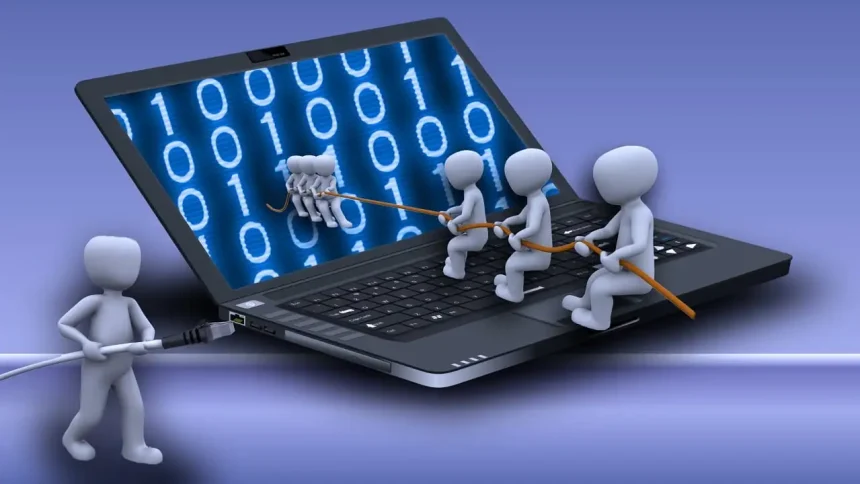Introduction
In the dynamic world of software development, technical debt is an omnipresent, yet often misunderstood, concept. Like financial debt, technical debt involves short-term solutions that can lead to long-term challenges if not properly managed. This blog aims to unravel the complexities of technical debt, discussing its definitions, impacts, management strategies, and the broader implications for software development teams and businesses.
What is Technical Debt?
Technical debt refers to the extra work that arises when code that is easy to implement in the short run is used instead of applying the best overall solution. It accumulates when development teams prioritize rapid delivery over the ideal architectural or code quality, resulting in increased complexity and potential issues down the line.
The Many Faces of Technical Debt
- Design Debt: Occurs when the overall architecture or design of the system isn’t ideal. This can be due to shortcuts taken during initial development phases.
- Code Debt: Refers to poor coding practices, such as lack of documentation, insufficient testing, or non-adherence to coding standards.
- Documentation Debt: Happens when documentation is outdated, missing, or incomplete, making it harder for new developers to understand the system.
- Testing Debt: Arises when tests are inadequate or missing, leading to increased risk of bugs and more difficult maintenance.
Common Misconceptions About Technical Debt
Technical debt is often misunderstood, leading to several common misconceptions:
- Technical Debt is Always Bad: While unmanaged technical debt can lead to significant issues, strategic technical debt can be beneficial if managed properly.
- Only Legacy Systems Have Technical Debt: Even new systems can accumulate technical debt if best practices aren’t followed from the start.
- Technical Debt Equals Poor Quality Code: Technical debt is not always about poor quality but rather about decisions made for speed or necessity that have future costs.
The Impact of Technical Debt
Short-Term Gains, Long-Term Pains
The immediate benefits of incurring technical debt include faster time-to-market and the ability to meet urgent deadlines. However, these short-term gains often come with long-term consequences:
- Reduced Velocity: As technical debt accumulates, it slows down future development because the codebase becomes harder to understand, modify, and extend.
- Increased Maintenance Costs: More effort is required to maintain and debug a codebase burdened by technical debt.
- Lower Morale: Developers may become frustrated working with a cumbersome and error-prone codebase, leading to decreased job satisfaction and higher turnover.
- Business Risks: Unresolved technical debt can lead to critical system failures, compromising business operations and customer trust.
Measuring Technical Debt
Quantifying technical debt is challenging but essential for effective management. Several metrics can help gauge the extent of technical debt:
- Code Complexity: High cyclomatic complexity indicates more intricate and harder-to-maintain code.
- Code Coverage: Low test coverage can be a sign of technical debt, as it implies higher risk of undetected bugs.
- Static Analysis Tools: Tools like SonarQube can analyze code quality and identify potential technical debt.
- Defect Density: High defect density indicates poor code quality and potential technical debt.
Strategies for Managing Technical Debt
Managing technical debt requires a balanced approach that addresses both immediate needs and long-term health of the codebase.
Proactive Measures
- Adopt Coding Standards: Implement and enforce coding standards to maintain code quality.
- Continuous Integration and Continuous Deployment (CI/CD): Automate testing and deployment to catch issues early and maintain a steady code quality.
- Code Reviews: Regular code reviews help identify and mitigate potential technical debt early in the development process.
- Automated Testing: Invest in automated testing to ensure code changes don’t introduce new issues.
Reactive Measures
- Refactoring: Regularly refactor code to improve structure and reduce complexity.
- Debt Reduction Sprints: Allocate dedicated time for teams to focus on reducing technical debt.
- Documentation Updates: Ensure documentation is kept up-to-date to aid in understanding and maintaining the codebase.
- Prioritize Debt: Not all technical debt needs to be addressed immediately. Prioritize based on impact and risk.
The Role of Leadership in Managing Technical Debt
Leadership plays a crucial role in managing technical debt. Here’s how leaders can make a difference:
- Educate Teams: Ensure that all team members understand the concept of technical debt and its implications.
- Foster a Culture of Quality: Promote practices that prioritize code quality and long-term maintainability.
- Resource Allocation: Allocate resources and time specifically for managing and reducing technical debt.
- Strategic Decision Making: Make informed decisions about when to incur technical debt and when to pay it down.
Balancing Innovation and Technical Debt
In the fast-paced tech industry, innovation often takes precedence. However, it’s essential to strike a balance between innovative progress and managing technical debt:
- Agile Methodologies: Implement agile practices to iteratively develop software while keeping an eye on technical debt.
- MVP Approach: Build a Minimum Viable Product (MVP) to validate ideas quickly, but plan for addressing technical debt in subsequent iterations.
- Technical Debt as Investment: View technical debt as an investment. Short-term debt can be acceptable if it leads to long-term gains, provided there’s a plan for repayment.
Real-World Examples of Technical Debt
Case Study 1: Startup Growth
A small startup decided to use a rapid development framework to launch their product quickly. This helped them capture market share and secure funding. However, as the user base grew, performance issues and bugs became prevalent. The team had to undertake significant refactoring and optimization efforts, illustrating how initial technical debt facilitated growth but required careful management later.
Case Study 2: Legacy System Overhaul
A large enterprise with a legacy system faced escalating maintenance costs and slowed development velocity. By incrementally refactoring and modernizing their system, they managed to reduce technical debt while continuing to deliver new features. This approach required a careful balance of resource allocation and strategic planning.
Tools and Techniques for Managing Technical Debt
- Static Code Analysis: Tools like SonarQube, ESLint, and Pylint help identify code quality issues and potential technical debt.
- Automated Testing: Frameworks such as JUnit, NUnit, and Selenium enable comprehensive automated testing, reducing the risk of technical debt.
- Continuous Integration: Jenkins, Travis CI, and CircleCI facilitate continuous integration and deployment, ensuring consistent code quality.
- Documentation Tools: Tools like Confluence and GitHub Wikis aid in maintaining up-to-date documentation, reducing documentation debt.
Technical Debt in Different Contexts
Agile Development
In agile development, technical debt can accumulate quickly due to the focus on rapid iteration. Agile teams should incorporate debt management practices into their sprints, such as:
- Definition of Done: Include code quality and documentation requirements in the definition of done.
- Sprint Planning: Allocate time in each sprint for addressing technical debt.
- Retrospectives: Use retrospectives to identify and plan for technical debt reduction.
DevOps Integration
DevOps practices can help manage technical debt through automation and continuous improvement. Key practices include:
- Infrastructure as Code: Treat infrastructure configurations as code to ensure consistency and reduce deployment-related debt.
- Automated Monitoring: Implement automated monitoring and alerting to quickly identify and address performance issues.
Future Trends in Technical Debt Management
- AI and Machine Learning: AI-driven tools can predict and identify technical debt more accurately, offering proactive solutions.
- Shift-Left Testing: Emphasizing early testing in the development cycle to catch issues sooner and reduce debt accumulation.
- Developer Education: Increasing focus on training developers in best practices and debt management techniques.
Conclusion
Technical debt is an inherent part of software development, with both positive and negative implications. By understanding its nature, measuring its impact, and employing effective management strategies, teams can mitigate the risks associated with technical debt while leveraging its benefits. Leadership plays a crucial role in fostering a culture of quality and strategic decision-making, ensuring that technical debt is managed proactively and effectively. As the industry evolves, continuous learning and adaptation will be key to navigating the complexities of technical debt. By balancing innovation with debt management, organizations can achieve sustainable growth and long-term success in the ever-changing landscape of software development.
Visit: https://www.timelinetale.com/







